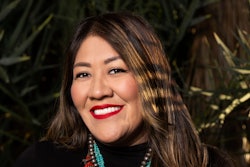Although 80% of students who enroll in community colleges plan on getting a bachelor’s degree, only around 15% do so within six years. It’s a product of what seems like a perpetually leaky transfer process, in which, nationwide, 43% of credits are lost between schools. Minoritized students are particularly affected—they’re more likely to start at two-year institutions and less likely to wind up finishing a four-year program. Now, the Institute for Higher Education Policy (IHEP), a nonpartisan nonprofit promoting post-secondary access and success, is publishing lessons learned from its ongoing attempts to build a better, more equitable transfer system.
Since 2021, IHEP has been piloting TransferBOOST (Bachelor’s Opportunity Options that are Straightforward and Transparent), an initiative that offers support to 24 two and four-year institutions in Arizona, Virginia, and Illinois in improving their transfer pathways.
 Amanda Janice Roberson, director of research and policy at IHEP
Amanda Janice Roberson, director of research and policy at IHEP
IHEP helps the schools align their transfer processes with four principles: that credits earned at an institution will transfer and apply to a bachelor’s, that costs will be streamlined and not change over the course of the student’s path, that time-to-degree will be minimized, and that degree pathways will be clearly communicated.
IHEP’s briefings, released Tuesday, are designed to serve as a model for institutions and states looking to replicate the Institute’s TransferBOOST work. One of the strongest takeaways is the importance of partnerships—within institutions, between institutions, and between institutions and states.
“You need to have really clear lines of communication [and] consistent understanding of policies and processes to do everything that we wanted to do,” said Roberson. “Establish[ing] relationships is really, really helpful and necessary for the success of some of these pathways.”
Dr. Tania LaViolet, a director of the College Excellence Program at the Aspen Institute, agreed.




















